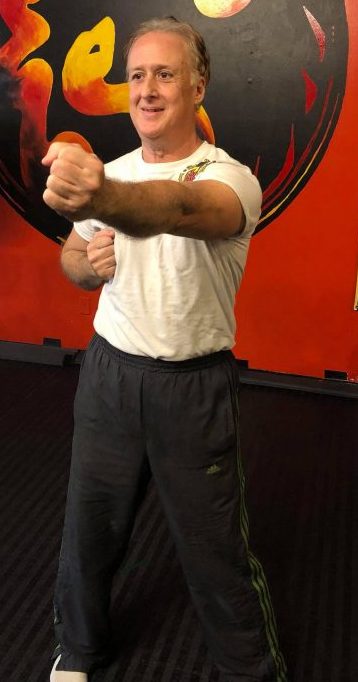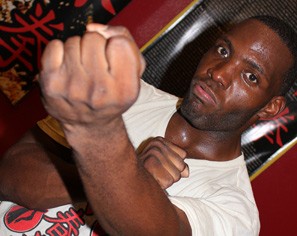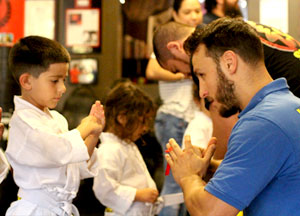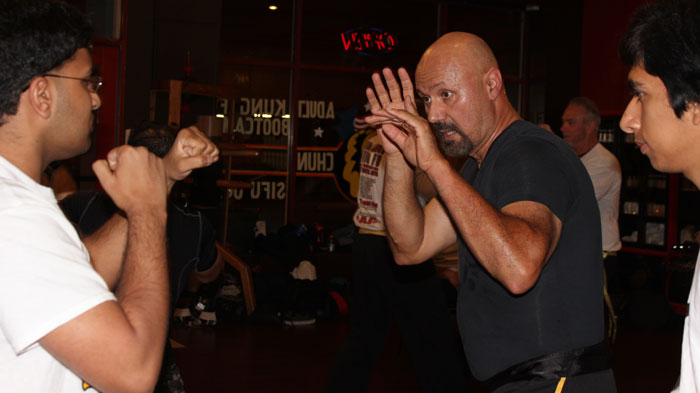The Strength of My Wing Chun Journey: By Ryan Beck
The Strength Behind Wing Chun: Techniques to Empower Your Martial Arts Journey
Wing Chun is different for each practitioner: how they move, when they flow and even the strength used. Each person is trained and trains differently; they all have different weaknesses and advantages. There are skills we all must learn and others that must be figured out individually.

Gains can come fast while mastery takes years to achieve. After approximately three years, I have seen these gains made by myself and others which means you can gain these as well.
My Wing Chun Journey: The Start

When I first started training with Sihing Garret in Tampa, I was the only regular student. His boxing background, plus his time training in Wing Chun under Sifu Och really set his skills apart. After the first class, I told myself, that no matter what, I would commit to training for at least one year, at that point I would re-evaluate. Not even two months later, I came to the realization that Wing Chun was in my soul and I was hooked. With any form of martial arts, there are typically two types of gains: physical and mental.

Physical goals are the easiest to see. I noticed I was moving faster, able to go longer, and could even tell my eyes where processing information faster. Slowly, was becoming a better fighter. I believe this primarily has to do with my instruction, training and dedication. These physical gains are generally noticed fairly consistently by all. You get out what you put in. These are the gains that pushed me through my first year.
Wing Chun Journey: My Second Year
When my one-year marker hit, I looked back on all the gains I had made. The surprising part about this reflection was the mental and lifestyle achievements. These types of gains are much harder to identify. I saw my temper cooled, I was eating healthy and living a healthy lifestyle. The craziest part was that these changes, these gains started to become evident, when I saw the people around me changing as well. They were growing through my growth. My wife and our two daughters started eating healthier, drinking water and working out. In addition, my wife and our girls are on their own martial arts adventure too.

The only limitation Wing Chun has to personal growth, is people’s willingness to grow. It’s not always easy to train. Let’s be honest, it’s hard work. After a long and hot day at my job, I don’t always want to train. We can always find a reason. I will never forget my Sifu once said, “instead of an excuse, just say it’s not a priority.” This is something I strive to apply to all aspects of my life. The interesting part is that once I am at class, I am always glad that I went. This is true in life, it’s never as bad as we thought it was going to be.

Wing Chun for Life: I will never quit.

Over the course of my Wing Chun journey thus far, I have found three strong reasons why I will never quit Wing Chun. The first reason is my family, I see the change in them and they look to me for guidance in life. Without martial arts, I am not sure I would know what direction to take them. The second reason is the tradition and culture, I have always been interested in the history and where Wing Chun comes from – not only the fighting, but the lifestyle as well.
Wing Chun: A History bigger than myself

There is such a history, that every time I Chi Sao, I feel like I am a part of something bigger than myself. The third and final reason I will never quit Wing Chun is the personal and physical aspect. I have grown tremendously since starting Wing Chun. The best part is how much growing I still have left to do. I know I can be faster, I know I can be even more technical and I know I have a lot more to learn and for me this is exciting!
My Wing Chun Journey could be yours
Gains can always be made in Wing Chun as long as goals are being set and matched, as long as a person is dedicated to train and as long as the community is strong. Wing Chun is limitless! If I can train hard even when I don’t want to or kick open new doors when I am too tired to, then there is nothing I can’t do, in life or in Wing Chun.
Start your Journey with Sifu Och Wing Chun
Are you ready to discover the transformative power of Wing Chun? Begin your journey with Sifu Och Wing Chun today! Fill out our contact form to start your journey and take the first step towards enhancing your martial arts skills and personal development.
Internal Links to Related Articles
- Exploring Wing Chun Techniques:
https://sifuochwingchun.com/wing-chun-techniques/
- Wing Chun and Personal Growth:
https://sifuochwingchun.com/wing-chun-and-personal-growth/
- The Benefits of Wing Chun Training:
https://sifuochwingchun.com/wing-chun-training-benefits/
Join Sifu Och Wing Chun Kung Fu – Fill out our contact form to start your journey



 If anybody is in the 40s or 50s age and would like to learn some self-defense they should not hesitate. They should come down to Sifu Och and start their own journey! Your age shouldn’t hold you back. I’m 58 but that is just a number. I don’t allow that to be an excuse to not learn something new. Life can be very hard. And many times you want to just give up. But the wonderful things in life take some time to learn.
If anybody is in the 40s or 50s age and would like to learn some self-defense they should not hesitate. They should come down to Sifu Och and start their own journey! Your age shouldn’t hold you back. I’m 58 but that is just a number. I don’t allow that to be an excuse to not learn something new. Life can be very hard. And many times you want to just give up. But the wonderful things in life take some time to learn. Sal shows that now matter your age you can accomplish anything with hard. Day after day Sal comes into class and puts in a hard days training. Starting from private lessons he has been able to work himself into the group classes. The most impressive thing about Sal is his determination. He doesn’t care about belts, or awards, or flashy techniques. He simply wants to know that he can take care of himself. Each day he comes in and builds himself from the last class.
Sal shows that now matter your age you can accomplish anything with hard. Day after day Sal comes into class and puts in a hard days training. Starting from private lessons he has been able to work himself into the group classes. The most impressive thing about Sal is his determination. He doesn’t care about belts, or awards, or flashy techniques. He simply wants to know that he can take care of himself. Each day he comes in and builds himself from the last class.




































































